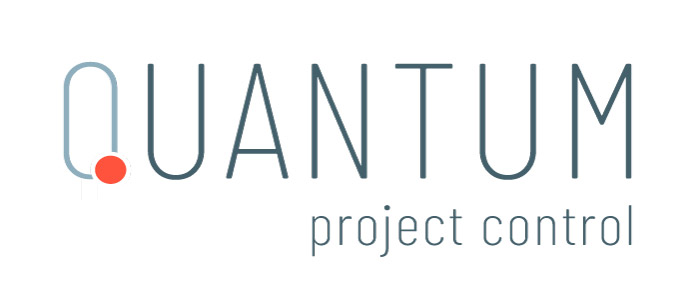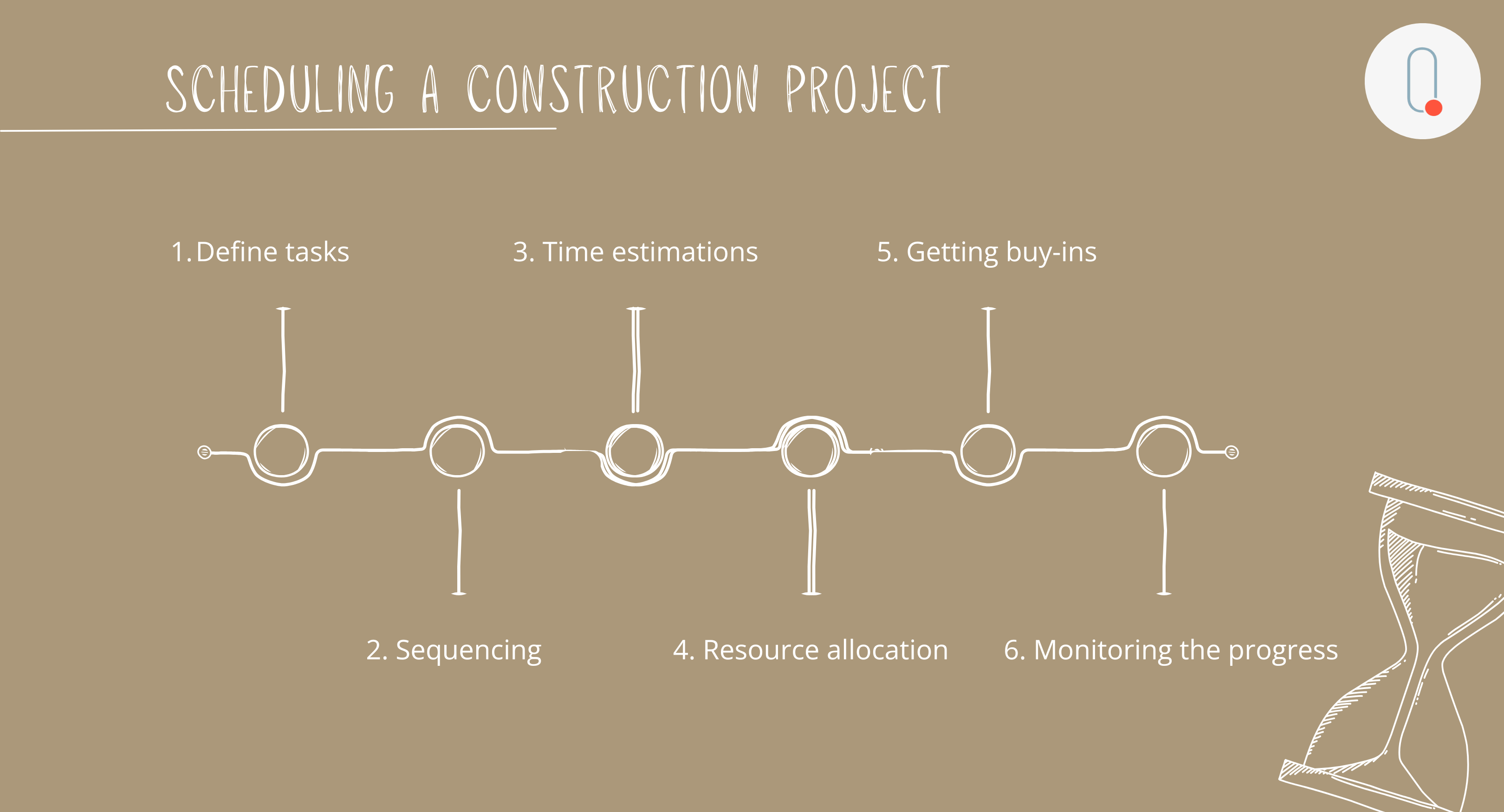Time scheduling is one of the pillars of successful construction project management. It involves the planning and organizing of project timelines to ensure that all essential tasks are accounted for and completed efficiently. Let’s dive into how time scheduling works, why it’s vital and how to overcome common challenges.
What is Time Scheduling?
Time scheduling is the process of organizing tasks and activities in the right order to meet a project’s deadlines. Being able to manage time, resources and the workload allows every phase of your construction project to progresses smoothly.
How to Successfully Schedule a Construction Project?
To successfully schedule time in a construction project, several critical elements must be addressed. Following these few steps provides a good structure to your schedule and serves as a strong foundation to any project.
Step 1: Define Tasks
The first step is defining tasks, which involves breaking the project down into much smaller, manageable activities or milestones. For instance, a construction project may include activities such as excavation, foundation work, framing, electrical wiring, plumbing, etc. So, here’s the trick: by dividing the project into these specific components, even the biggest of undertakings become easier to manage and track.
Step 2: Sequencing
Once tasks are defined, the next step is placing them in an order, or sequencing. This involves determining the logical and most efficient order in which tasks need to be completed. Proper sequencing ensures that tasks proceed without unnecessary delays or disruptions. For example, logically excavation must occur before foundation work and the structure cannot begin until the foundation is complete. But there is more to it than that, because some processes can fit into multiple points in the sequence, or certain parts of a job may need to be completed after various other tasks. If necessary larger tasks should be broken into smaller, more manageable components for greater clarity and efficiency.
Step 3: Time Estimations
Estimating the duration of each task is a crucial aspect of time scheduling. This involves carefully assessing not only the actual time required to complete each task but also accounting for potential obstacles such as approval processes. Providing realistic time estimates is essential for setting workable expectations, avoiding overcommitment and maintaining project’s credibility and overall flow.
Step 4: Resource Allocation
Equally important is resource allocation, which involves assigning team members, equipment and materials to specific tasks. Effective allocation ensures optimal use of available resources and avoids bottlenecks caused by shortages or mismanagement.
Step 5: Finalising the Time Schedule
With tasks, sequences and resources in place, a rough draft of the Project Schedule is ready to be presented to the team and key stakeholders. Incorporating the and getting the buy in of the full team effectively means your schedule is finalised.
Step 6: Continuous Monitoring of the Progress
Time scheduling doesn’t end with the approval of a timeline. Using the timeline to monitor progress is crucial to ensure the project stays on track. Regularly reviewing task progress and identifying potential delays allows for timely tweaks, adjustments and effective communication. It’s typically up to the Project Manager to keep stakeholders informed about timelines, changes and progress fostering transparency and collaboration. Regular updates to the charts help manage expectations and maintain trust among all parties involved.
Who benefits from having strong Time Schedules?
Creating a detailed and well-prepared time schedule is not just a good-to-have practice but a necessity. A thoughtfully planned schedule enables alignment, structure and accountability among all parties involved in a project. From managers to clients and the wider project team, everyone benefits from the clarity and dependability a good time plan provides, making it a critical element in achieving project success.
Project Manager
A well-structured schedule serves as the central roadmap for a project, allowing project managers to monitor timelines and allocate resources effectively; it facilitates meeting deliverables on time. For example, in a construction project, a clear schedule helps anticipate when materials like steel beams or concrete need to be delivered, ensuring they arrive precisely when required to avoid storing issues and downtime.
Project Team Members
For the team executing the work, clear deadlines provide direction and focus. When team members know what is expected of them and by when, they can prioritise tasks more effectively. The schedule also holds team members accountable for their contributions, ensuring their work supports the overall progress and meets the specific requirements of the project.
Key Stakeholders
Investors, sponsors and other key stakeholders rely on a project’s time schedule to evaluate its viability and progress. They feel reassured when they’re kept informed about project progress against milestones. A meticulously maintained schedule also offers transparency and the opportunity to make informed decisions. It builds trust and demonstrates good control assuring stakeholders that the project is being managed responsibly throughout its lifecycle.
Tips for Effective Time Scheduling
There are a number of good practices, which can make time scheduling easier. Here are a few of them.
Be Realistic
It’s crucial to set timelines that reflect the true complexity of the tasks at hand. Overly optimistic schedules may look good on paper (at least at first), but they often fail to account for potential delays like unforeseen technical issues, resource shortages, or unfavourable weather conditions. A skilled PM factors in these risks, creating more achievable deadlines and reducing the likelihood of project setbacks.
Use Technology
Utilising project management tools such as Primavera, MS Project or other Gantt chart software (as well as getting support from AI tools of your choice) can significantly streamline the scheduling process. These tools allow you to create detailed timelines, track progress and map out tasks visually, making it easier to manage large projects. They also provide the flexibility to adjust schedules quickly and efficiently in response to changes.
Monitor and Adapt
Constantly reviewing the progress of the project is essential to ensuring the schedule stays on track. Regular monitoring identifies any delays or issues early, providing the opportunity to reallocate resources adjust deadlines or shift priorities as necessary. This proactive approach helps keep the project moving forward and reduces the risk of major disruptions.
Foster Communication
Clear and open communication with all stakeholders is vital to successful time scheduling. Keeping everyone informed about deadlines, changes and expectations helps prevent misunderstandings that can lead to delays or conflicts. Regular updates, meetings and discussions ensure that the entire team is aligned and working towards the same goals.
Time Scheduling saves more than just time
All in all, time scheduling is a critical component of successful construction project management. By meticulously planning and coordinating tasks, resources and timelines, Project Managers can ensure that projects are completed on time, on budget and up to standard. A strong focus on time scheduling not only enhances project efficiency but also builds trust and fosters positive relationships with clients, team members and stakeholders, contributing to the overall success of the project.



